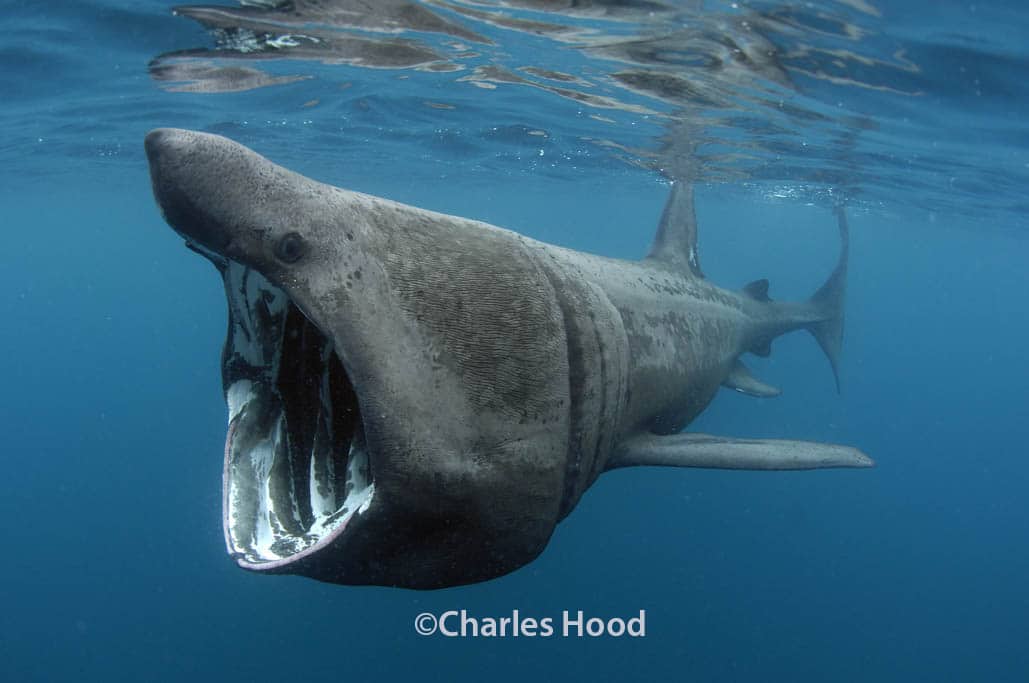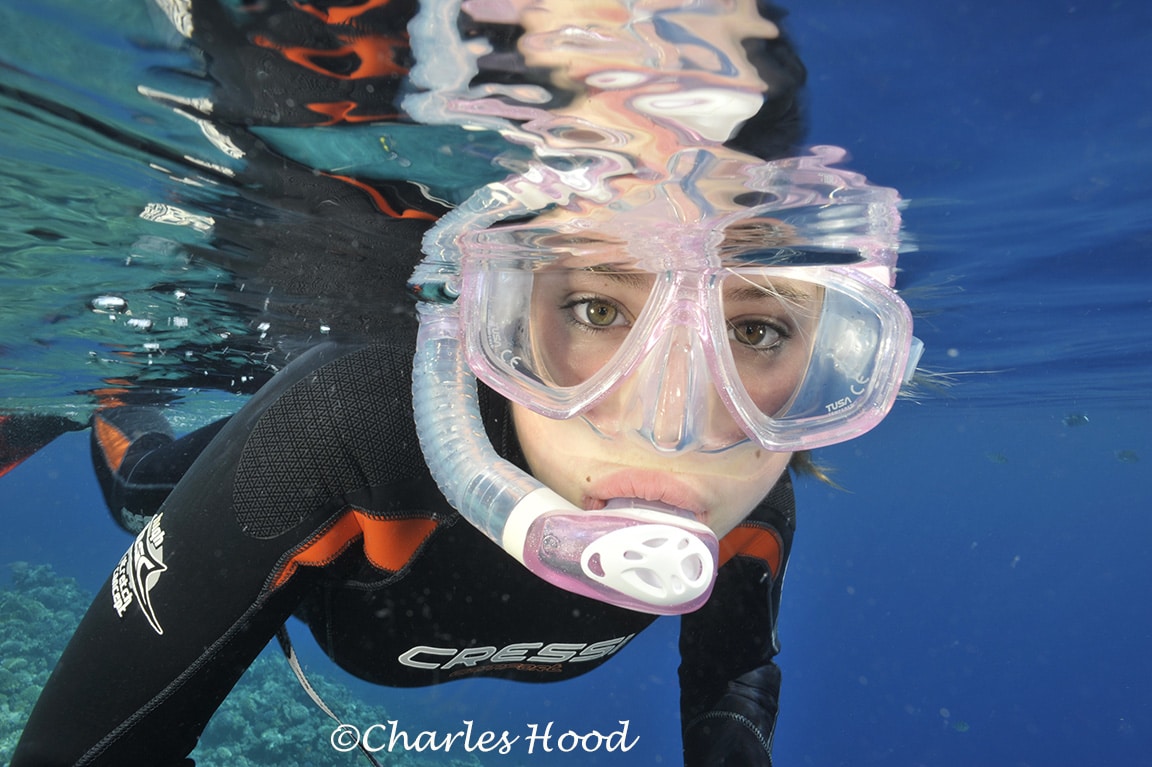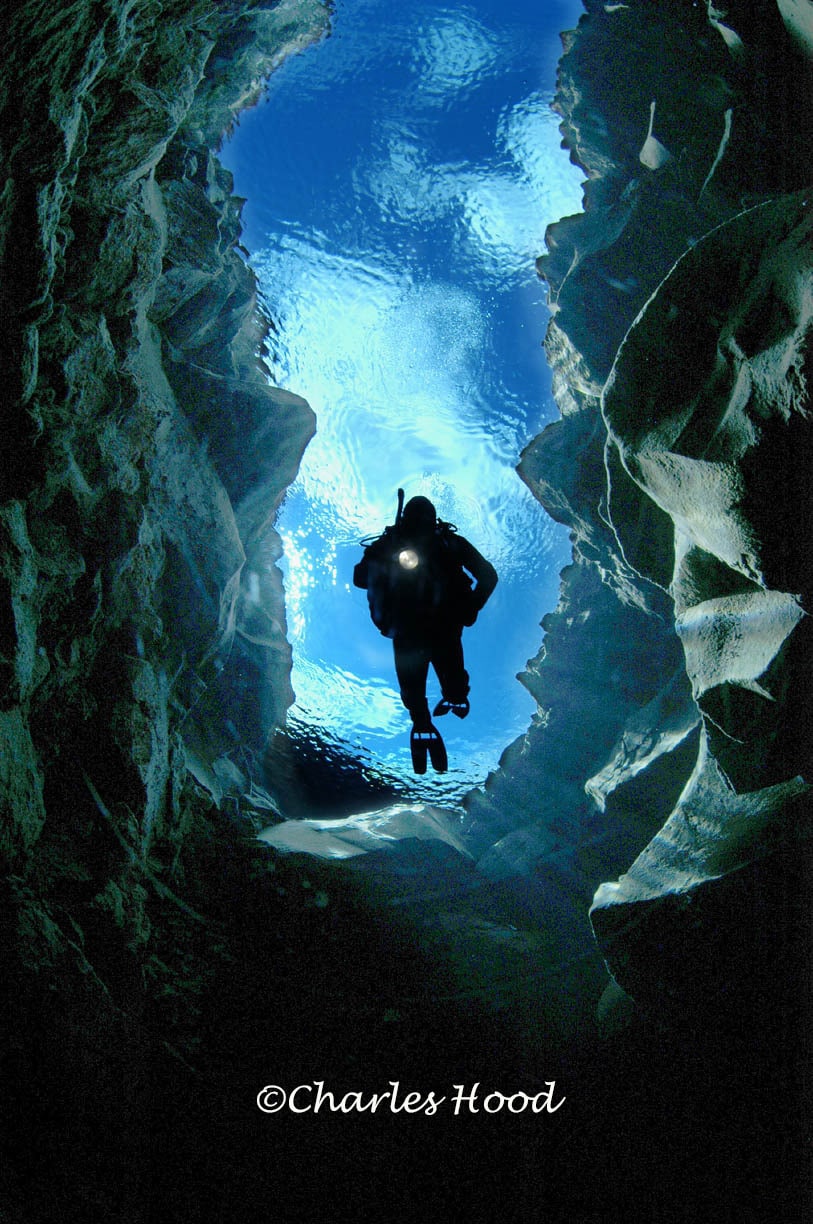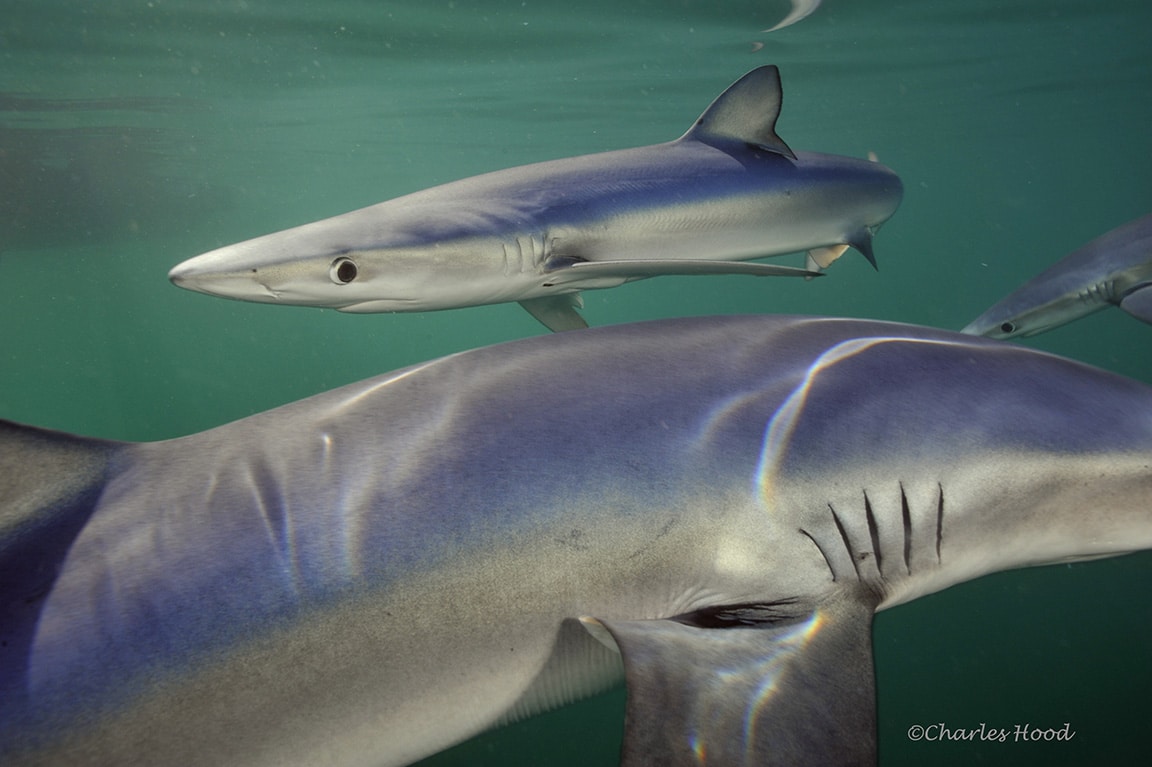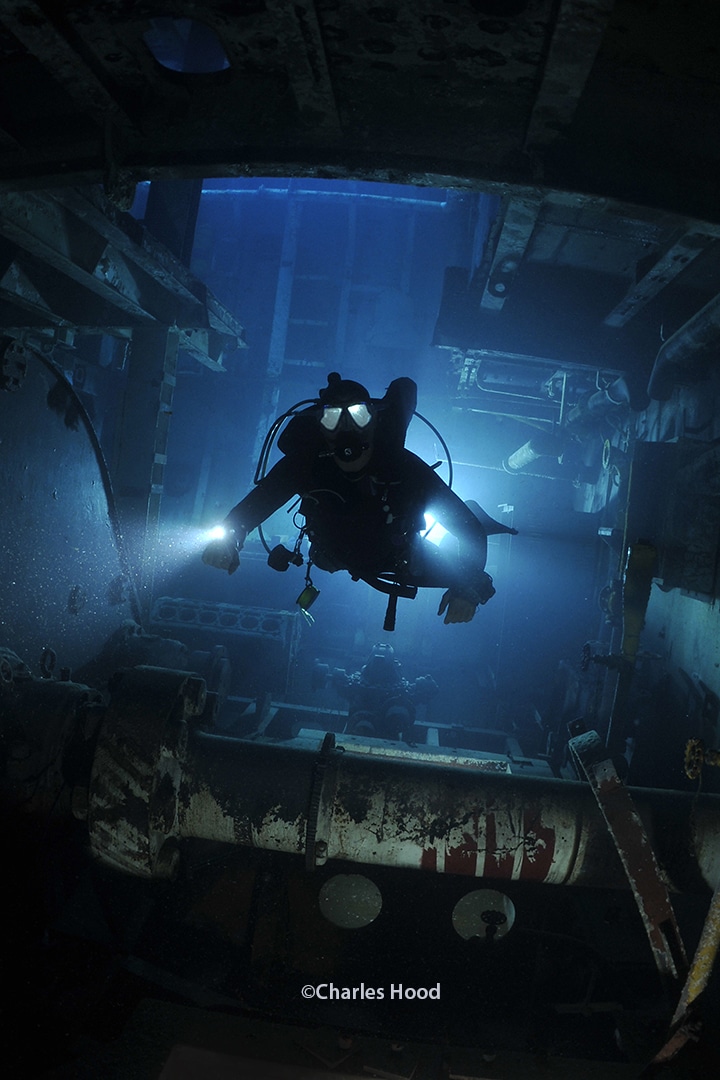Photo / Video News & Reviews
Scubaverse Underwater Photographer Interview: Charles Hood
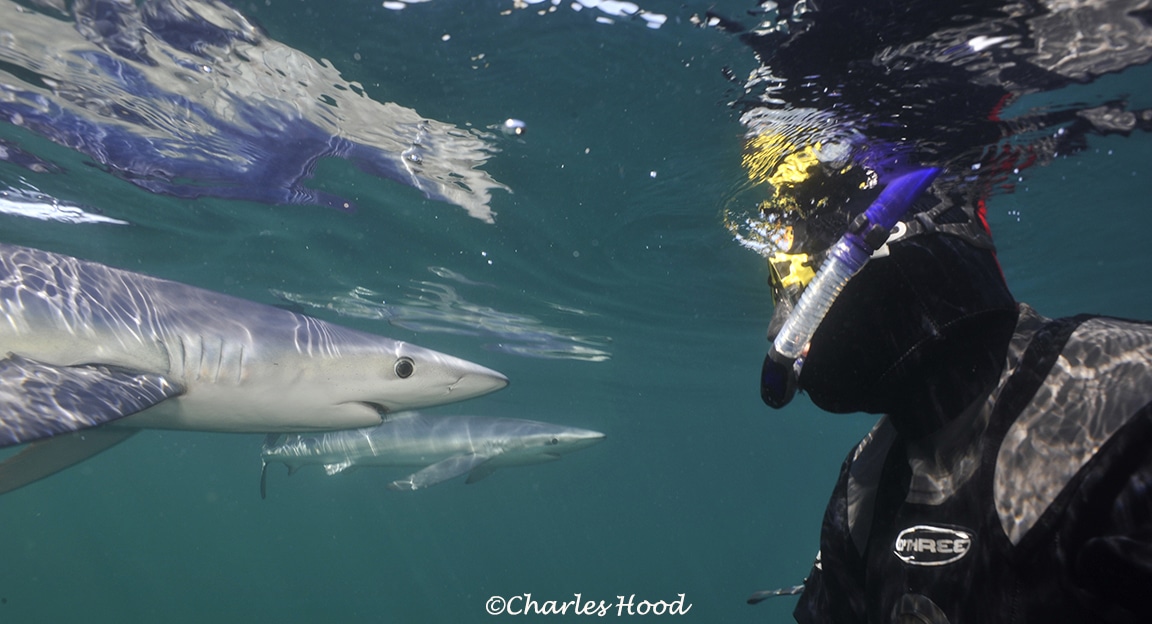
In an ongoing series, Scubaverse’s Underwater Photography Editor Nick Robertson-Brown talks to underwater photographers from around the world that he admires. In this blog: Charles Hood.
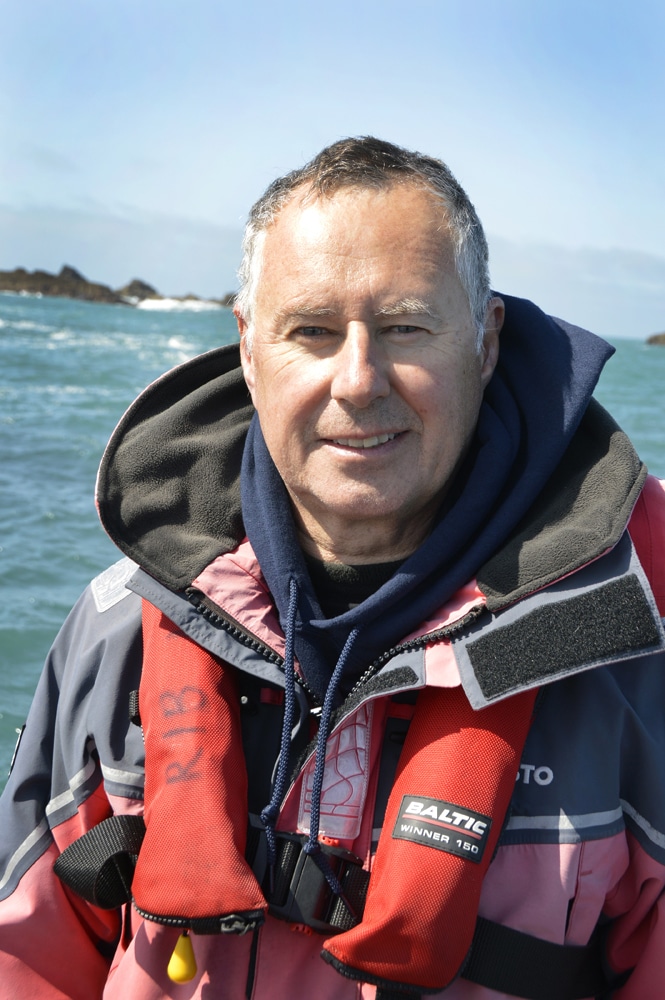 CH: I began my fascination with underwater photography when living in the Middle East in the late 70’s. After a brief spell at university I set off on any expedition I could find that was diving connected. The images I captured went on to win numerous wildlife and marine related photographic competitions, including being twice highly commended at the Natural History Museum Wildlife Photographer of the Year and being named Underwater Photographer of the year in 2001. My work is now virtually all commercial. I have written and illustrated over 1000 published articles, dozens of books and manuals and had over 100 front covers including TIME magazine. Today I live with Sandra my scuba diving wife in Cornwall, England, where I can often be found miles from shore snapping blue sharks and anything else in our pelagic waters.
CH: I began my fascination with underwater photography when living in the Middle East in the late 70’s. After a brief spell at university I set off on any expedition I could find that was diving connected. The images I captured went on to win numerous wildlife and marine related photographic competitions, including being twice highly commended at the Natural History Museum Wildlife Photographer of the Year and being named Underwater Photographer of the year in 2001. My work is now virtually all commercial. I have written and illustrated over 1000 published articles, dozens of books and manuals and had over 100 front covers including TIME magazine. Today I live with Sandra my scuba diving wife in Cornwall, England, where I can often be found miles from shore snapping blue sharks and anything else in our pelagic waters.
NRB: How did your underwater photography start?
CH: It began in the mid 1970s when I lived in the Middle East. My first underwater camera was a Kodak 126 roll film camera in a homemade Perspex housing. By today’s standards the images are terrible but at the time they were quite credible as there weren’t many marine images around at that time. I dived solo and my instruction was don’t go deeper than nine metres and you’ll run out of air before you get bent.
NRB: What is your favourite u/w camera equipment (past & present) & why?
CH: After my homemade affair I purchased a Nikonos III and 15mm lens. When the exposure was correct the 35mm Fujifilm slide images it produced would challenge even the most advanced camera equipment today, if not out-gun them when projected on a large screen. Today I use my trusted old Nikon D3 in Aquatica housing – usually with either a Nikkor 20mm or 16mm lens. In my opinion Aquatica produces the most robust housings, you really can chuck them around when the conditions demand. The D3 produces only 12 million pixels but on full frame those pixels are huge and contain so much colour information. I only use prime lenses underwater, as this guarantees edge-to-edge sharpness and without a zoom there is one less control to think about.
NRB: What would be your advice to anyone new to underwater photography?
CH: First, keep it simple and basic, don’t be tempted to become a ‘kitchen sink’ photographer. Next have a complete and comprehensive understanding of photography per se. It is also vital one fully understands camera settings and how all your equipment works prior to taking it underwater. I also work as a boat skipper come photo guide and can honestly say that on the majority of trips more people miss once-in-a-lifetime opportunities than capture them. This is nearly always due to either not being able to set the camera correctly or through simple component failure such as dead batteries or wrongly formatted memory cards; and don’t get me started on massive strobe arms, flimsy flapping fibre cables and huge floats – you are asking for trouble.
NRB: What, or who, has been your single biggest inspiration for your underwater photography?
CH: That’s an easy question. BSoUP’s Colin Doeg without question was the finest underwater coach I bounced ideas off in the 80s. His appreciation for new concepts was second to none. His endless patience and frank honesty as I showed him loads of near misses was inspiring. But importantly his commercial photography background always challenged my imagery for the better – 95 per cent there was not good enough for Colin. It is easy to be awe inspired by great photographers and even to successfully imitate them, however, if you want to claim an image truly as your own you need to have a great tutor to discuss concepts with. Sometimes Colin’s and my ideas would lead me to required bits of kit that at the time weren’t commercially available, so I also turned to Warren Williams who’s knowledge of optics and mechanical skills are legendary.
NRB: What image are you most proud of and why?
CH: And this is the most difficult question to answer. Probably the image I am most proud of is a silhouette of a diver at Silfra in Iceland that made the front cover of TIME magazine. After an initial day to get to grips with what Silfra had to offer we returned for another two days with a pre-rehearsed set of images in mind which, unless you are incredibly lucky, is the only way one can get stunning images.
NRB: Where is your favourite dive location, and is it for the photography?
CH: My favourite place for underwater photography is about 20 miles south of Penzance, Cornwall. Here the Blue Sharks arrive in July and remain until the end of October. Penzance is only a five minute drive from where I live so what better than to have sharks on your doorstep. This year we are also after some of the other more exotic animals that are visitors to our waters such as Bluefin tuna and the elusive Porbeagle Shark.
NRB: What are you views on marine life manipulation, moving subjects?
CH: Where does marine wildlife disturbance begin? Would chumming for sharks be counted as manipulation? Does having your buddy manoeuver around a critter so that he lines it up for you get a better shot count as disturbance? I’m not too sure. Physically poking or moving a subject definitely is on the other hand pretty invasive. I think it depends on, is one causing distress to the animal and critically, repeatedly so? When you see snapper after snapper queuing up or marauding around to photograph the same animal I would say this could be viewed as unacceptable, irrespective if you have physically touched it. On the other hand I don’t really view a few folk snorkelling with half a dozen chum-attracted sharks in mid-ocean as causing any harm to them at all.
NRB: What do you look for when you are making your images?
CH: For a photograph that no one else has taken. Yes sometimes it is nice to have a stock image to fulfil a story or article but for me it’s just a copy of someone else’s idea.
NRB: What motivates you to take u/w photos?
CH: Capturing new images. Showing the general public what lies beneath our waters, especially in Cornwall. I almost always have an idea in mind before I even configure my camera gear. This way I know well beforehand what lens, port, strobes and settings I am using. Sometimes I’ll photograph a subject for hours without changing anything except for composition.
NRB: If you could photograph any one thing/place what or where would that be?
CH: A Great White in UK waters.
To see more of Charlie’s work click here.
Blogs
Diver Discovering Whale Skeletons Beneath Ice Judged World’s Best Underwater Photograph
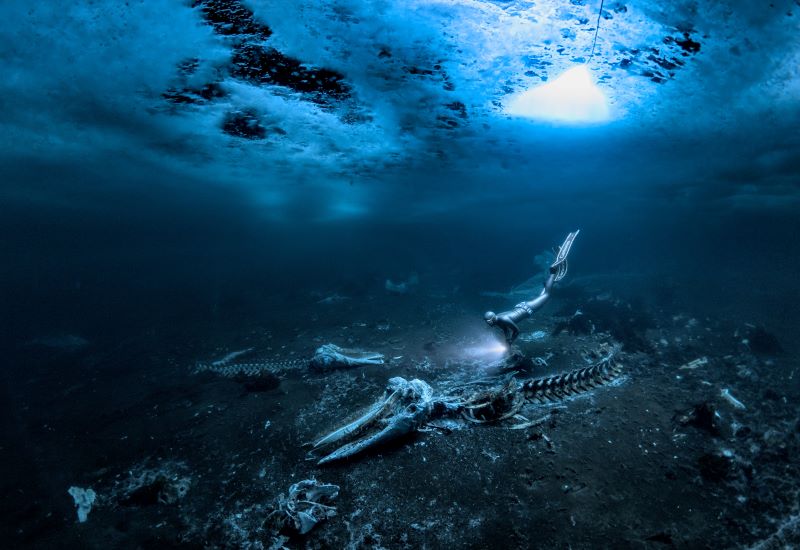
An emotive photograph showing a freediver examining the aftermath of whaling sees
Alex Dawson from Sweden named Underwater Photographer of the Year 2024. Dawson’s
photograph ‘Whale Bones’ triumphed over 6500 underwater pictures entered by underwater
photographers from around the world.
“Whale Bones was photographed in the toughest conditions,” explains chair of judging
panel Alex Mustard, “as a breath-hold diver descends below the Greenland ice sheet to bear
witness to the carcasses. The composition invites us to consider our impact on the great
creatures of this planet. Since the rise of humans, wild animals have declined by 85%. Today,
just 4% of mammals are wildlife, the remaining 96% are humans and our livestock. Our way
needs to change to find a balance with nature.”
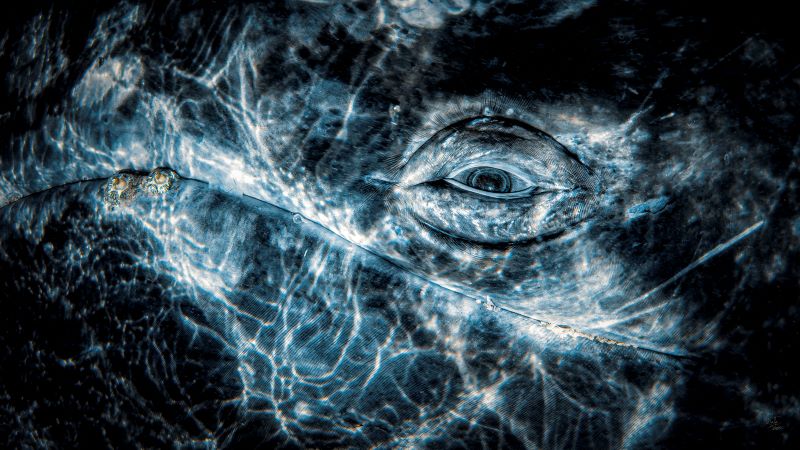
Photo: Rafael
Fernandez Caballero
Whales dominated the winning pictures this year with Spanish photographer Rafael
Fernandez Caballero winning two categories with his revealing photos of these ocean giants:
a close up of a grey whale’s eye and an action shot of a Bryde’s whale engulfing an entire bait
ball, both taken in Magdalena Bay, Baja California, Mexico. Fernandez Caballero took ‘Grey
Whale Connection’ while drifting in a small boat, holding his camera over the side in the water
to photograph the curious whale. ‘The End Of A Baitball’ required Fernandez Caballero to dive
down and be in exactly the right place at the moment the whale lunged. “The photo shows
the high speed attack,” he said, “with the whale engulfing hundreds of kilograms of sardines
in one bite — simply unforgettable to see predation on such a scale.”
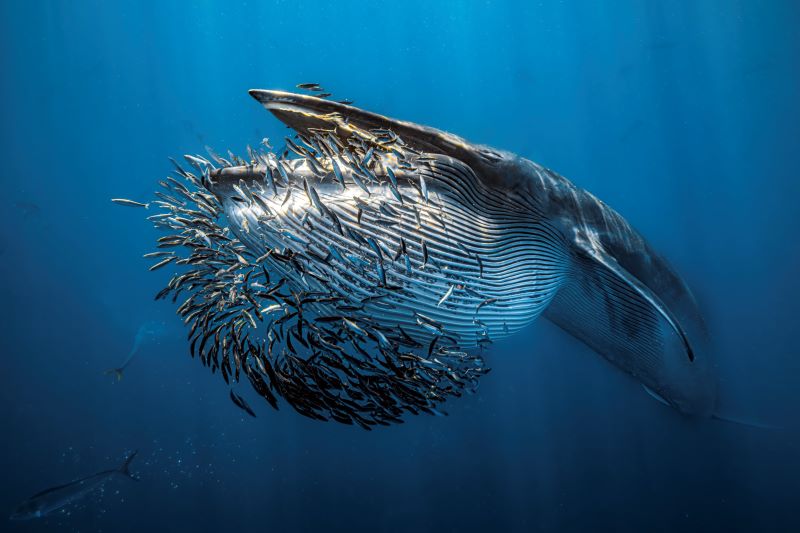
Photo: Rafael
Fernandez Caballero
Lisa Stengel from the United States was named Up & Coming Underwater Photographer of the Year 2024 for her image of a mahi-mahi catching a sardine, in Mexico. Stengel used both a very fast shutter speed and her hearing to catch the moment. “If you listen there’s an enormous amount of sound in the ocean,” she explained. “The action was too fast to see, so I honed in on the sound of the attacks with my camera to capture this special moment.”
“It is such an exciting time in underwater photography because photographers are capturing such amazing new images, by visiting new locations and using the latest cameras,”
commented judge Alex Mustard. “Until this year I’d hardly ever see a photo of a mahi mahi,
now Lisa has photographed one hunting, action that plays out in the blink of an eye.”
The Underwater Photographer of the Year contest is based in the UK, and Jenny Stock,
was named as British Underwater Photographer of the Year 2024 for her image “Star
Attraction”, which finds beauty in species of British wildlife that are often overlooked.
Exploring the west coast of Scotland, Stock explained “in the dark green depths my torch
picked out the vivid colours of a living carpet of thousands of brittle stars, each with a
different pattern. I was happily snapping away, when I spotted this purple sea urchin and I
got really excited.”
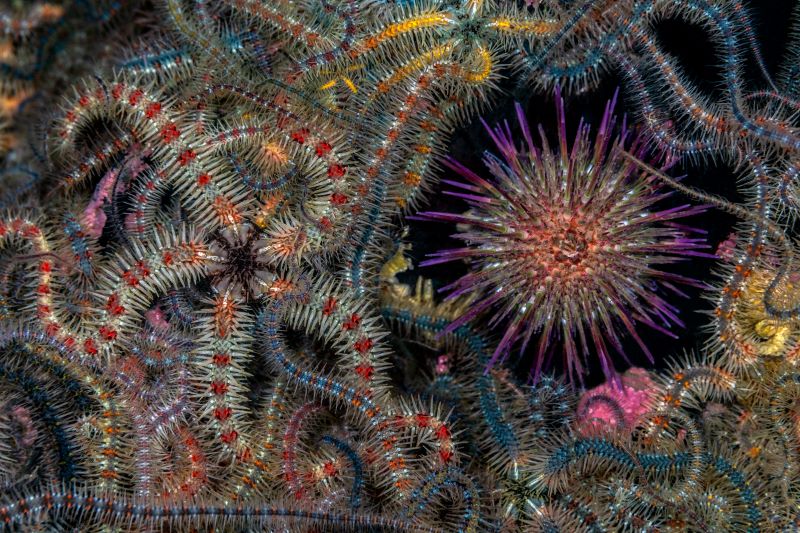
Photo: Jenny Stock
In the same contest, Portuguese photographer, Nuno Sá, was named ‘Save Our Seas
Foundation’ Marine Conservation Photographer of the Year 2024, with his photo ‘Saving
Goliath’, taken in Portugal. Sá’s photo shows beachgoers trying to save a stranded sperm
whale. The picture gives us hope that people do care and want to help the oceans, but also
warns us that bigger changes are needed. “The whale had been struck by a ship and its fate
was sealed,” explains Sá. “An estimated 20,000 whales are killed every year, and many more
injured, after being struck by ships-and few people even realise that it happens.”
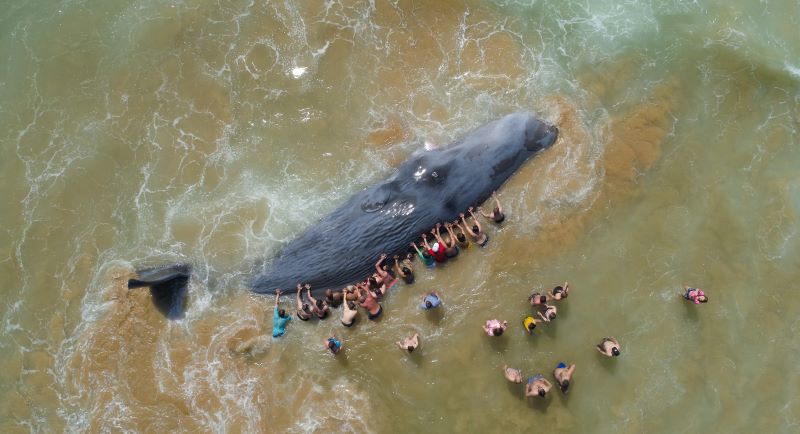
Photo: Nuno Sá
More winning images can be found at www.underwaterphotographeroftheyear.com.
About Underwater Photographer of the Year
Underwater Photographer of the Year is an annual competition, based in the UK, that celebrates photography beneath the surface of the ocean, lakes, rivers and even swimming pools, and attracts entries from all around the world. The contest has 13 categories, testing photographers with themes such as Macro, Wide Angle, Behaviour and Wreck photography, as well as four categories for photos taken specifically in British waters. The winners were announced in an award ceremony in Mayfair, London, hosted by The Crown Estate. This year’s UPY judges were experienced underwater photographers Peter Rowlands, Tobias Friedrich and Dr Alexander Mustard MBE.
Header image: Underwater Photographer of the Year 2024 winner Alex Dawson
News
World’s Best Underwater Photographers Unveil Breathtaking Images at World Shootout 2023
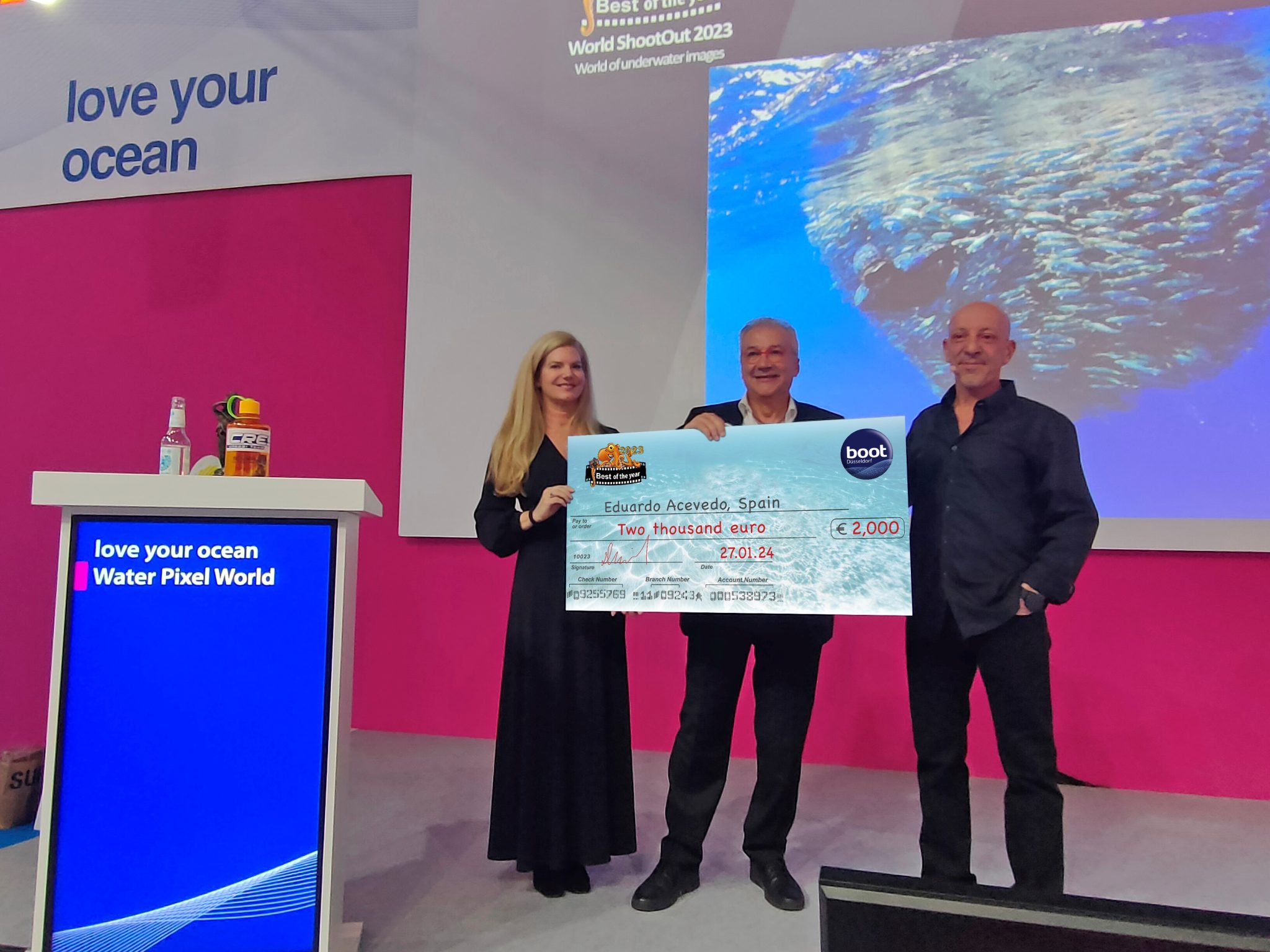
The winners of the prestigious World Shootout 2023 underwater photography competition were announced at this year’s BOOT Show, captivating audiences at the world’s largest diving and water sports exhibition in Dusseldorf, Germany. Hundreds of photographers from 54 countries competed across nine categories, pushing the boundaries of creativity and technical skill.
Grand Prize Winners
- Picture of the Year: Spanish photographer Eduardo Acevedo “secured” the top Honor with the prestigious prize the “boot Dusseldorf Director’s Prize, earning an Andromeda statuette and a €2,000 cash prize.
- Best 5 Images Portfolio: Luc Rooman from Belgium triumphed in this category, winning a dream 4-week diving trip for two to Papua New Guinea, valued at $18,900.
- Amateur Photographer: Alexandra Ceurvorst from the USA impressed the judges with her talent, taking home the 1,000 € cash prize award.
Celebrating Diversity and Innovation
This year’s competition saw 11,680 entries from 964 photographers, showcasing a remarkable spectrum of skills and perspectives. From the intricate wonders of Macro photography to the beauty of “Black Water”, the “Underwater Fashion” category added a touch of artistry and innovation, while the ever-important ” Environmental & Conservation” category served as a powerful reminder of the need to protect these fragile ecosystems.
Looking Ahead: AI and Ocean Conservation
World Shootout founder and producer David Pilosof unveiled an exciting addition for the 2024 competition: this year the Environmental category will be focusing on the impact of plastic on our oceans and future.
This category will embrace the potential of AI or other editing software as a tool to amplify the conservation message.
Entrants will submit campaigns of three original underwater photographs dealing with plastic pollution, along with their final AI assistance processing. This innovative approach encourages artistic expression while raising awareness about a critical environmental issue.
Explore the Stunning Collection
Discover the complete album of competition entries by clicking here.
For Low-resolution photos of finalist entries in eight categories, click here.
-

 News3 months ago
News3 months agoHone your underwater photography skills with Alphamarine Photography at Red Sea Diving Safari in March
-

 News3 months ago
News3 months agoCapturing Critters in Lembeh Underwater Photography Workshop 2024: Event Roundup
-

 Marine Life & Conservation Blogs3 months ago
Marine Life & Conservation Blogs3 months agoCreature Feature: Swell Sharks
-

 Blogs2 months ago
Blogs2 months agoMurex Resorts: Passport to Paradise!
-

 Blogs2 months ago
Blogs2 months agoDiver Discovering Whale Skeletons Beneath Ice Judged World’s Best Underwater Photograph
-

 Gear Reviews2 weeks ago
Gear Reviews2 weeks agoGEAR REVIEW – Revolutionising Diving Comfort: The Sharkskin T2 Chillproof Suit
-

 Marine Life & Conservation2 months ago
Marine Life & Conservation2 months agoSave the Manatee Club launches brand new webcams at Silver Springs State Park, Florida
-

 Gear Reviews3 months ago
Gear Reviews3 months agoGear Review: Oceanic+ Dive Housing for iPhone


